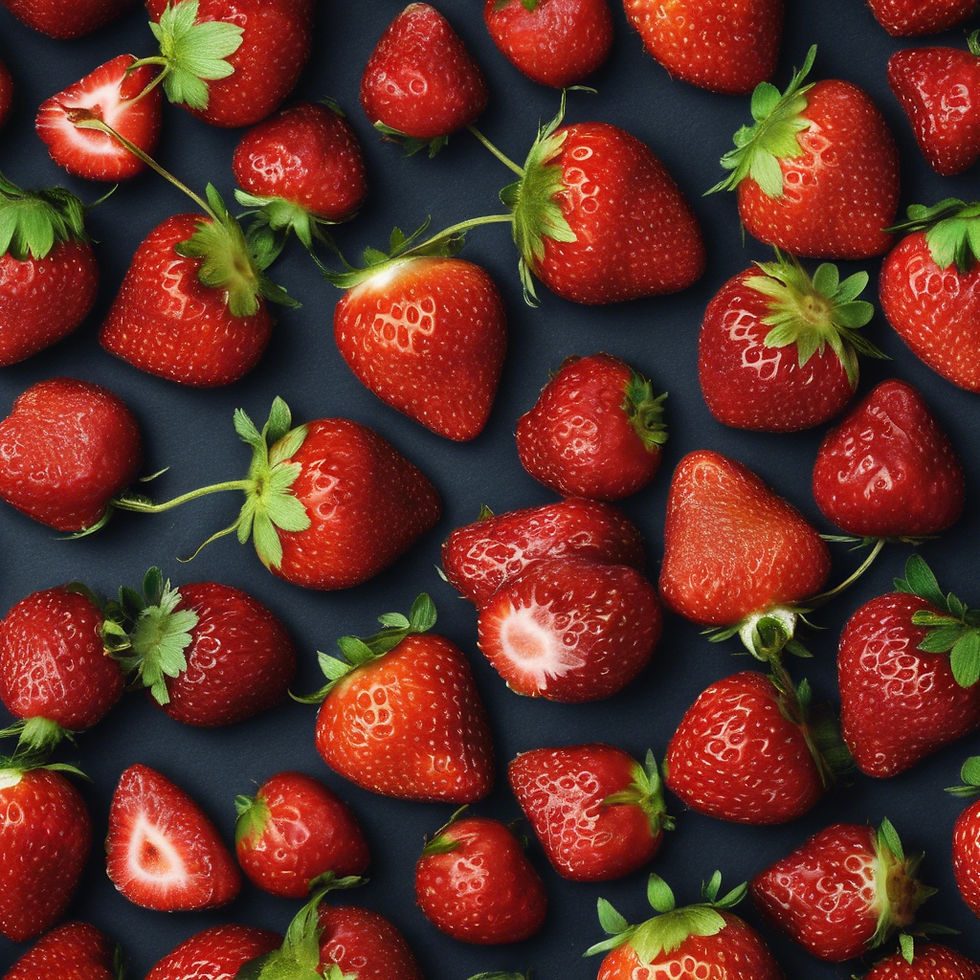Optimizing Nutrition with Rhythm during your Cycle
- The Rhythm Newsroom

- Oct 25, 2024
- 4 min read
Updated: Jan 27

Cycle syncing is a powerful concept that allows individuals to adjust their diets and activities according to their menstrual cycles. Hormonal fluctuations throughout the cycle can significantly impact physical and mental well-being. Therefore, tailoring your nutrition can be a game-changer. This post will delve into the best foods to enhance nutrition while cycle syncing.
Foods for the Menstrual Phase
During the menstrual phase, you may feel lower in energy and crave comforting foods. It's crucial to focus on nutrient-dense options that support recovery and replenish lost nutrients.
Iron-Rich Foods
To combat fatigue and replenish iron levels, include foods such as:
Leafy greens: Spinach and kale are excellent sources of iron and can be easily added to smoothies or salads. A cup of cooked spinach contains about 6.4 mg of iron, which is around 36% of the daily recommended intake for adult women.
Legumes: Lentils and chickpeas are versatile for soups, salads, or stews. One cup of cooked lentils offers about 6.6 mg of iron, making it an outstanding choice.
Red meat: If you consume meat, consider beef or lamb, which are rich in heme iron. Just 3 ounces of cooked beef can provide roughly 2.1 mg of iron.
These foods help address iron deficiency that can occur due to heavy menstrual bleeding.
Anti-Inflammatory Foods
Inflammation can increase discomfort during menstruation. Consider these:
Berries: Blueberries and strawberries are full of antioxidants. A cup of strawberries provides about 49 mg of vitamin C, which can help reduce inflammation.
Fatty fish: Salmon and mackerel are excellent sources of omega-3 fatty acids. A 3-ounce serving of salmon contains about 2,260 mg of omega-3s.
Nuts and seeds: Walnuts and flaxseeds are great snacks. Just a tablespoon of ground flaxseeds packs about 2.3 grams of omega-3 fatty acids.
Incorporating these foods can ease menstrual cramps and improve overall mood.
Foods for the Follicular Phase
As estrogen levels rise, you may notice an improvement in energy and mood. This is the time to focus on foods that support hormonal health.
High-Protein Foods
Include protein-rich foods such as:
Eggs: A versatile source of high-quality protein. One large egg has about 6 grams of protein and contains essential amino acids.
Tofu: An excellent plant-based option that provides about 20 grams of protein per cup.
Quinoa: A complete protein providing around 8 grams per cup when cooked.
These proteins support muscle repair and maintain energy levels.
Fresh Fruits and Vegetables
Enjoy seasonal produce during this phase. Aim for:
Cruciferous vegetables: Such as broccoli and Brussels sprouts, which aid in estrogen metabolism. One cup of raw broccoli offers about 2.5 grams of protein.
Citrus fruits: Oranges and grapefruits provide vitamin C for immune support—one medium orange contains about 70 mg of vitamin C.
Eating a variety of colorful fruits and vegetables can enhance mood and vitality.
Foods for the Ovulatory Phase
During ovulation, energy levels peak. This is a great time to fuel your body with nutritious options.
Hydrating Foods
Hydration is key, so focus on foods with high water content:
Cucumbers: Refreshing and low-calorie, containing about 95% water, perfect for hydration.
Watermelon: This sweet fruit is also about 92% water, making it a favorite for hydration.
Coconut water: Naturally hydrating and full of electrolytes, with about 600 mg of potassium per cup.
These foods help maintain hydration and support peak energy levels.
Foods Rich in Zinc
Zinc is vital for hormonal balance. Incorporate foods like:
Pumpkin seeds: A crunchy snack with about 2.2 mg of zinc per ounce.
Shellfish: Oysters provide a whopping 74 mg of zinc per serving, making them one of the richest sources.
Chickpeas: A great plant-based option, with about 2.5 mg of zinc per cup cooked.
Including these foods can enhance reproductive health and immune function.
Foods for the Luteal Phase
As the luteal phase begins, energy levels may fluctuate, leading to potential cravings and mood changes.
Complex Carbohydrates
To manage cravings and stabilize blood sugar, focus on complex carbohydrates:
Whole grains: Brown rice and quinoa provide fiber and sustained energy. One cup of brown rice delivers about 3.5 grams of fiber.
Sweet potatoes: A nutrient-dense source that packs 4 grams of fiber per medium-sized potato.
Incorporating these foods can help manage energy dips and mood swings.
Magnesium-Rich Foods
Magnesium plays a key role in alleviating PMS symptoms. Include:
Dark chocolate: A satisfying treat packed with about 64 mg of magnesium per 1-ounce piece.
Leafy greens: Spinach and kale, which provide about 157 mg of magnesium per cooked cup.
Nuts: Almonds and cashews, offering about 76 mg of magnesium per ounce.
Adequate magnesium levels can help reduce cramps and improve mood.
Your Path to Well-Being
Cycle syncing provides an effective way to align your nutrition with your body’s rhythms. By understanding the nutritional needs of each phase of the menstrual cycle, you can enhance your energy and mood stability. Whether it’s replenishing iron during menstruation, increasing protein intake in the follicular phase, or embracing complex carbohydrates in the luteal phase, making the right food choices can significantly impact how you feel throughout the month.
Exploring foods for cycle syncing supports your physical health while deepening your awareness of how diet and hormones interact. By paying attention to your body's needs, you can nourish yourself more effectively and align your nutrition with your cycle.
Let this be the beginning of your journey to enhanced health—one meal at a time.



Comments